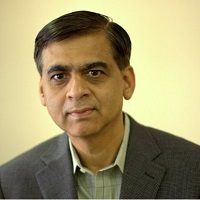 In this special guest feature, Nitin Donde, CEO of Talena, Inc., discusses how the business of Big Data impact the economic development front, especially as it relates to poverty alleviation. Nitin Donde is the Founder and CEO of Talena, Inc., a provider of software designed to support always-on Big Data applications through backup, recovery and other data management capabilities.
In this special guest feature, Nitin Donde, CEO of Talena, Inc., discusses how the business of Big Data impact the economic development front, especially as it relates to poverty alleviation. Nitin Donde is the Founder and CEO of Talena, Inc., a provider of software designed to support always-on Big Data applications through backup, recovery and other data management capabilities.
Big data has made its imprint in numerous ways in the business world. Technology’s impact on society is immeasurable; it has changed how we work and live, how we consume news, how countries democratize. And as John Battelle puts it, “Business is humanity’s most resilient, iterative, and productive mechanisms for creating change in the world.” How then will the business of Big Data impact the economic development front, especially as it relates to poverty alleviation?
For an organization like Unicef, good data is key to delivering immunizations, healthcare, and water to some of the world’s most disadvantaged children. In the mid-1990s, Unicef developed the Multiple Indicator Cluster Survey (Mics) methodology after it realized that there were huge gaps in the availability of data on the world’s poorest, hardest to reach kids – and Mics is now the largest source of statistical information on children. These enormous data sets enable important trend analysis and progress monitoring; all critical to Unicef’s work.
Public institutions and NGOs alike are discovering big data sources that can be used by policy makers to both understand trends and change policy in relative real-time, rather than relying on five-year census data. Examples of these new data sets include:
- Mobile phone calls: Traditional census surveys often miss the poorest and most marginalized populations and mobile phone data is key to filling these big gaps. Mobile devices and data associated call detail records (CDRs), often the primary communications mechanism in developing countries, can be used as proxies to identify changes in socio-economic levels and even track spread of infectious diseases such as malaria. Because the data is real-time, analyzing mobile phone data can often shed light on emerging poverty trends in developing countries. In the Ivory Coast, a lower-middle-income economy in West Africa, mobile phone penetration rate is over 80%. The results of a recent research effort showed a strong correlation between call details with patterns of wealth in the country, which enable government officials to supplement official data to validate growth and poverty alleviation hypotheses.
- Satellite imagery: Combining satellite data with machine learning and data analytics can help governments identify poverty trends and supplement existing census work. Satellite data can provide a degree of geographic specificity that is not available in typical government data sets. For example, a current pilot study in Sri Lanka is looking at analyzing satellite images of rooftop building materials and building height that might indicate poverty levels. Satellite data can also help estimate harvest size even before the harvest occurs, critical to a significant part of the world’s rural poor.
- Biometric data: India is probably the best-known use case of biometric data to drive greater efficiencies in poverty-reduction programs. With more than one billion people already enrolled, the Aadhaar program uses biometrics to create unique identifiers and help the poor access benefits and subsidies with clear identification of one’s identity. The project also uses a Hadoop-based database that verifies an individual’s identity within 200 milliseconds. Since India spends $50 billion a year on these subsidies, ensuring that benefits go to the right people and eliminating middleman waste and corruption is critical. To provide a sense of the impact, on May 31, 2014 there were 4.6 million Aadhaar transactions. Less than two years later, on March 31, 2016, there were 107 million transactions.
The preceding discussion focused primarily on the benefits of non-traditional big data sets that can be applied to poverty analytics. However, there are natural consequences with the gathering and use of these data sets.
- Privacy: government and other agencies need to clearly communicate that these data sets will be used solely for their intended purpose to ensure buy-in from the populace whose personal information is collected
- Security: the recent rash of ransomware attacks should help everyone understand the value of protecting these data assets against intentional attacks and unintentional errors
- Transparency: by highlighting how these data sets are able to shape poverty alleviation programs governments will be able to generate greater support for their data collection efforts
There is no doubt that these atypical data sets provide a significant opportunity to help government and non-profit agencies refine and optimize poverty-alleviation programs. Greater efforts must be placed on connecting the people who have the tools to analyze and interpret the data with the companies that generate the data in the first place to ensure that these new and improved data sets move from being interesting anecdotes to becoming truly transformative. I believe we have the power in our lifetime to put data to work to greatly alleviate poverty and for the betterment of all.
Sign up for the free insideBIGDATA newsletter.




Speak Your Mind